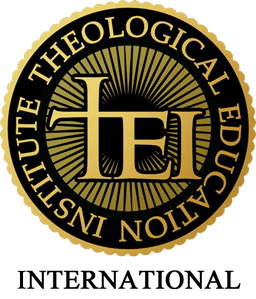The Devil and Violent Trade
John C. Rankin (2014)
The name “Satan,” from the Hebrew ha’satan, means “the accuser” or “the slanderer.” Its first chronological appearance is in Job 1 (ca. 2000-1500 B.C. before the Law of Moses) when Satan is allowed to accuse Job – part of the divine drama. Then, “the devil” comes from the Greek tou diabolos, which is exactly synonymous with ha’satan, and is first seen in Matthew 4 in the temptation of Jesus in the wilderness.
The devil only appears in the Bible consistent with his nature – a reactionary, a deceiver, the prince of darkness, as a liar and a murderer. He is always in the shadows, beginning with his masquerade as the ancient serpent in the Garden of Eden.
In Ezekiel 28, he shows up as the real power behind the slave-trading king of Tyre. The text says: “You were in Eden, the garden of Elohim; every precious stone covered you … You were anointed as a covering cherub, for so I ordained you. You were on the holy mountain of Elohim; you walked in the midst of the stones of fire. You were sound in your ways from the day you were created until in you, injustice was found. Through your abundant merchandising you were filled with violence, and you sinned … Your will became arrogant because of your beauty, and you spoiled your wisdom because of your brightness … By your many iniquities and unjust merchandising you have desecrated your sacred places. So Yahweh drives him from the mount of Elohim.
The “holy mount of Elohim” reflects language that permeates Genesis to Revelation, where heaven is described in terms of a royal palace, a royal court where Yahweh Elohim is on his throne. And the heavenly host, the angels, are his servants in governing the heavens – all before Adam and Eve are created. One classic profile of this reality is found in Isaiah 6, including the prophet’s call to ministry.
The authority for grasping this dominant theme across the Bible is the late Meredith Kline, professor of Old Testament at Gordon-Conwell Theological Seminary. He sums it up in his final book when he was in his eighties: “God, Heaven and Har Magedon.” It is a thick read, but foundationally necessary to grasp the whole Bible on its own terms.
The creation of the earth, and our stewardship on it, reflects the prior realities of the heavenly court. Which is to say – the economics of heaven are in place before, and also define, the economics of human civilization.
The word “economics” is rooted in the Greek term oikonomos, “rule of the household” (tracing further back to the Hebrew bayith for the household). When man and woman join in covenantal marriage, in diversity in service to unity, trust is the currency of their relationship, and indeed, money is an exchange of trust if it is to work. The two becoming one reflect the image of the One who is Trinity, where the quintessential diversity in service to unity is in place for us to emulate in marriage and the building of the social order, the greater oikonomos. Man and woman in marriage is the most powerful economic engine there is, as all human history attests.
The fruit of what we call wealth is seen in the precious stones that adorn the cherub, and as the whole biblical language of the heavenly court is examined, the economic order by assumption involves production of goods and services, and concomitant trade among the heavenly host, who are free moral agents in their responsibilities. But the cherub of Ezekiel 28 abuses such freedom, he breaks trust, he cheats others in his trading practices.
His heart becomes proud, he sees his extraordinary beauty, and assigns it to his own self-sufficient nature, as it were, and not as a gift of God. Thus, he becomes his own god, and as a result of such pride, he moves from “give and it shall be given” to “take before you are taken.” The cherub engages in a widespread trade (or “traffic” or “merchandise” in the Hebrew) filled with violence, and as he is driven from the mount of God, a demonic mafia comes to pass, as we later learn that a number of rebellious angels join with him.
In one version of the Greek myth of Narcissus, it begins in the context of a spurned homosexual lover who provokes the gods to exact revenge. It thus comes to pass as Narcissus falls in love with his own reflection in a pool of water, only to commit suicide because he cannot be satisfied in the love of himself alone. Self-centeredness swallows itself. A pagan myth thus reflects a part of the prior and deeper reality in Ezekiel.
Thus, the “original sin” in reality begins not with Adam and Eve, but with the devil. It is the sin of broken economics, of violent trade rooted in a self-centered focus that is the a priori opposite to the other-centered focus of heterosexual married fidelity.
###


